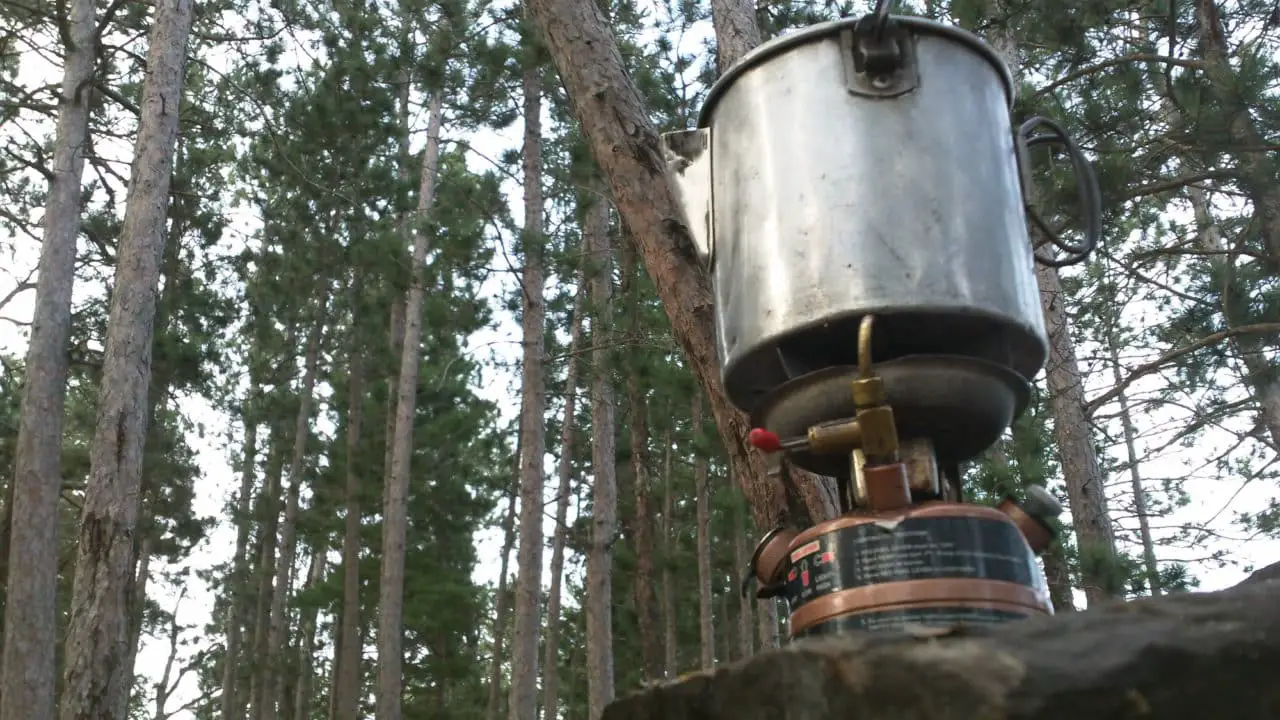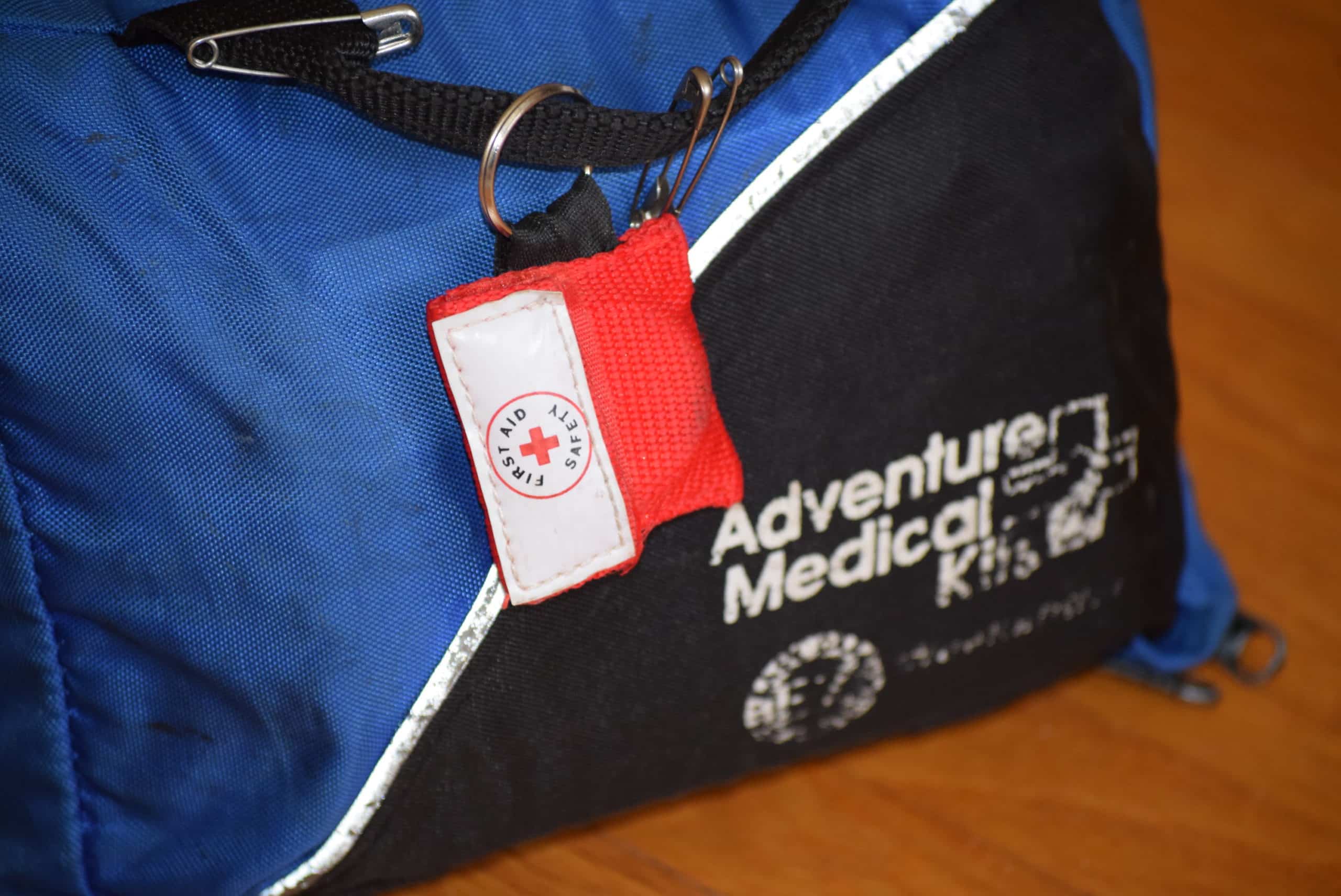Recent events with a raging war in Europe and seemingly never-ending stories of natural and manmade disasters make one wonder if they are prepared for an emergency. A survival go bag is a collection of essential items your household may need in a crisis that can at least give you some peace of mind that you are doing the right thing in being prepared. Having a disaster supplies kit is the first step. What items should be in your survival bag? Which ones can wait?
Critical Items For a Survival Go Bag
In a disaster situation, no one wants to be in a position where they are unable to survive on their own for a few days. But it may happen. Nobody should wait for a disaster to occur to put together a survival kit and stock it in their home. More detailed information can be found on how to prepare for a disaster emergency on the Federal Emergency Management Administration (FEMA).
Water
Water is the most important item you can stockpile. You can survive without food for weeks, but not just a few days without water.
A good rule of thumb is to have one gallon per person per day for several days for drinking and sanitation. This means you’ll need several gallons of water at all times — and more if you live in a warm climate or have children. If you’re in an urban area, you may get by with as little as one gallon per person per week, but that’s not likely to happen in rural America.
You can buy bottled water in bulk from warehouse stores like Costco or Sam’s Club, but it will expire after a year or two. Then again, so will the bottled water you buy from the grocery store. The only way to guarantee safe storage is to use new, sterilized containers and fill them with fresh tap water.
It’s best to use plastic jugs because they take up less space than barrels. If you want to use barrels, remember that 55-gallon drums are cheaper than smaller drums, but they’re also hard to fill and empty quickly because they weigh almost 500 pounds when full.
Food
When preparing for a possible disaster, it is crucial to consider what foods you may need. Most people would not think about preparing food for a disaster, but it is vital for preparedness.
In a disaster, food that is safe to eat may be in short supply. With the uncertainty of how long it might take for life to return to normal, it is good to have at least a several-day supply of non-perishable food on hand.
Some suggestions for foods that require little or no preparation include canned meats and fruits, peanut butter, jerky, crackers (saltines), cookies, and granola bars. Other foods such as bread, milk, fresh fruits, and vegetables are also good choices.
It’s essential to keep these tips in mind when storing food:
Check expiration dates on canned goods regularly and use older items first, so they do not spoil. If the can is swollen or damaged, throw it out immediately.
Keep ready-to-eat foods in airtight containers and store them in cool, dry places.
First Aid Kit
Events during and after a disaster can vary dramatically. You may need to provide immediate medical care to an injured family member. An up-to-date first aid kit is a necessity in every home and your survival go bag. There are several types of kits available. You can purchase one or design your own. Your kit should be easily accessible but where children cannot reach it. Replace items as they expire.
The American Red Cross suggests you keep the following items in your first aid kit:
- Antiseptic wipes, soap, iodine tablets, and rubbing alcohol for cleaning wounds
- An instant cold pack to help relieve pain from burns, muscle aches, and sprains
- Bandages in assorted sizes for cuts and scrapes
- Calamine lotion to soothe insect bites and rashes from poison ivy or poison oak
- Dental care materials such as cotton balls and dental floss
- A few moistened towelettes for cleaning hands and face when water is not available
- Pain relievers such as aspirin, ibuprofen, or acetaminophen for minor aches and pains
Medications
Events during and after a disaster can vary dramatically. You may need to provide immediate medical care to an injured family member. You may even need to care for yourself. Because of this, you must include any medications in your survival go bag that you and your family members regularly take as part of your emergency supplies.
- Assemble a two-week supply of your regular prescription medications (including over-the-counter drugs). Also, consider adding the following items:
- Prescription drugs (heart medication, blood pressure medication, insulin, etc.)
- Non-prescription drugs (pain relievers, antacids, laxatives, allergy medicines)
- Glasses/contacts/solution
- Syringes or injectable medicine
Flashlight
Extra batteries for the flashlight or radio are also a good idea. If your power is out and you have no way to charge your phone, you might need to rely on a flashlight.
Flashlights are another must-have item for any emergency supply kit. Having a set of extra batteries for the flashlight in your survival go bag is also a good idea. For example, if your power is out and you have no way to charge your phone, you might need to rely on a flashlight at night.
Keep in mind that essential flashlights can be purchased at dollar stores and discount retailers like Walmart and Target. But if you want something with a little more oomph, consider investing in a tactical flashlight.
Battery-powered or hand-cranked radio or NOAA Weather Radio with tone alert.
During a disaster, communication with the outside world is vital. Information about the current disaster situation can instill a sense of control and confidence during an emergency. It may also save your life by asking you to take shelter or evacuate an area.
Having a way to receive information is critical for first responders and hospitals, nursing homes, and other institutions that must have the power to provide care.
Battery-powered or hand-crank radio and an NOAA Weather Radio with tone alert are good choices. You can find these at many retail stores or online. If the power goes out, you can use a battery-powered radio to get information from local stations (if they’re still broadcasting). An NOAA Weather Radio will give you continuous weather updates from the National Weather Service for your area.
Knife, Wrench, or Pliers
These simple hand tools are a real-time saver that can come in handy if you need to turn off utilities, cut lines or cloth or create shelter. Include a couple in your survival go bag.
- Multi-tool – A multi-tool is a toolbox in your pocket. It combines many of the functions of the tools that follow into one compact package.
- Pliers are handy for turning off water, gas, and electricity. They can also turn nuts and bolts, grip wire, or bend metal.
- Wrenches are used to turn off gas and water valves by hand.
- Screwdrivers are essential for tightening and loosening screws, but they can also be used as prying tools in a pinch.
- Utility knife is perfect for cutting through fabric, plastic, rope, or cardboard. Some knives have blades that lock in place when extended, so they don’t accidentally close on your fingers while you’re using them. Some even include screwdrivers built into the handle.
- Hammers can be used to drive in nails and break glass in emergencies.
Whistle
A whistle can signal for help if you are stranded and need to contact search and rescue to hear you. Whistles are often used as a signaling device in many situations. For example, in search and rescue operations, a whistle is very effective in getting the attention of rescuers. In addition, by using a whistle, you can conserve energy since it does not take much effort to blow into one.
Essential Items To Consider
While not as critical as water and food, these items can be considered essential, especially in disaster situations that extend into multiple days. Including these as part of your survival go bag preparation can help you
Cash
You will need cash if ATMs and credit card readers are not working due to power failure. The best practice is to split available funds among adult family members. Don’t forget coins too. Coins are less susceptible to lose by fire and flood.
In the worst-case scenario, you need cash for many reasons when the power goes out:
- Bartering for needed goods or services
- Buying gasoline the pumps don’t work without electricity
- Paying for hotel rooms, food, or other expenses if you have to evacuate
- Buying things from neighbors
In addition, if your community is without power for more than a few days, the stores may run out of supplies, and it would be helpful to have some cash on hand.
Emergency Blanket
A foil-type packed blanket for each person provides a simple shelter during cold or wet conditions. An Emergency Blanket helps retain your natural body heat in emergencies. In addition, the covering offers a barrier from dampness and cold surfaces, reflecting 80% of your body heat to help prevent hypothermia during emergencies.
Use this emergency blanket to create a temporary shelter or collect water from dew, rain, or snow. It can be used as an emergency blanket, tarp, ground cover, or emergency signal. The reflective material helps you remain visible in low light conditions.
Extra Keys To Your House And Car
Keys allow access to locked buildings or vehicles. Even if the power is out and your home has a keyless entry, they will work. They are not missed until you need them.
Extra Socks
Foot care is essential. A spare set of dry socks translates into immediate comfort even in the worst circumstances. However, a best practice is to change socks if your feet become wet immediately. Waterlogged feet are vulnerable to blisters, and blisters can quickly derail a trip. So, it’s critical to keep your feet dry and healthy.
That’s why an extra pair of socks is one of the essential items in a survival bag. If you are located in an area in warm weather, consider bringing lightweight liner socks — these thin polypropylene or nylon socks can be worn under thicker wool or synthetic hiking socks to help wick moisture away from the skin during high activity and hot temps.
Local Maps
If you need to evacuate but have no phone or access to the internet, you may need to depend on a paper map to find your way to safety. You should also keep a local map in your glove compartment or emergency kit if your GPS stops working.
Evacuation maps are available from your local government’s website, and many state transportation departments offer free printed maps at rest stops and welcome centers along the highway. If you need more information about the roads in your area, you can visit AAA’s website for links to state transportation departments.
Maps of your town or city are available from local planning commission offices and city hall. In addition, street maps are often available for free at welcome centers and visitors’ bureaus.
Keep in mind that electronic navigation systems poorly map some areas, so even if you don’t want a paper map as a backup, it can be helpful when planning routes ahead of time.
Manual Can Opener
A can opener is simple, easy to use, and goes a long way in an emergency. A manual can opener can be had for under $10, and there’s no easier way to open canned goods than with one.
A simple Swing-Line or P-38 “John Wayne” hand can opener will allow you to open canned goods. It’s an excellent item for the bug-out bag because it’s compact, inexpensive, and lightweight. The Swing-Line opener is about six inches long, making it easy to carry in a knapsack.
The P-38 “John Wayne” military issue hand can opener is another excellent choice. Weighing less than an ounce, this little gem has been around since World War II and is still used by the US Military today.
Dust Mask
Depending on the type of emergency, you may need a mask to help protect you against contaminated air or smoke. Masks don’t take up much room and should be included in a survival go bag.
- Dust Mask: This is a lighter face covering that can help filter out non-toxic particles that can cause sneezing and coughing. These masks are made of paper and should only be used once.
- N95 Respirator: This is a heavier duty mask that can protect against more severe exposure to dust, allergens, and debris.
- N100 Respirator: This is a heavier duty mask that can protect against more severe exposure to dust, allergens, and debris.
Plastic Sheeting And Duct Tape
If you plan to shelter in place, create a living area bearer that will prevent smoke, dust, or other contaminates from you. “Sealing a room” is considered a short-term protective measure to create a barrier between you and potentially contaminated air outside. While these may be too bulky for survival go bag, they should be accessible
Small Metal Mirror
Reflectors and mirrors can also be used for signaling. A mirror can signal other people by flashing light towards them. It is beneficial if there is an aircraft overhead. You can hold a mirror at an angle towards the sun to reflect the light towards the aircraft. If you have a compass, you can use its mirror to reflect sunlight at an airplane or rescue helicopter. The rescuers will see flashes of light, which they can then trace back to you.
Final Thoughts on Creating a Survival Go Bag
With proper preparation, you can survive in the aftermath of a variety of natural disasters. The items suggested above are meant to remain in your kit and not be used immediately. For example, the first aid kit will come in handy if someone needs to get stitches or any other minor injuries. However, you are unlikely to break a leg or have any other significant injuries that would need it. The emergency blanket is there for warmth as well as possible additional shelter. For example, you might use it if a house is destroyed and you need another way to stay warm.



